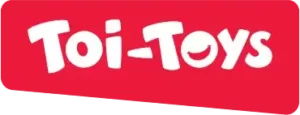VAT Guide for the Netherlands
Welcome to our practical guide on VAT (Value Added Tax) for the Netherlands, crafted to assist e-commerce sellers within Europe who are considering expanding their operations to the Dutch market. Grasping the Dutch VAT system is key for running a smooth business and staying compliant with both local and EU VAT regulations. In this guide, we cover essential information on the VAT rates for different types of products and services, the VAT registration process, filing requirements, and other crucial points.
Dutch VAT Rates in 2024
The Netherlands sets its VAT rates in compliance with EU regulations, ensuring that the standard rate is at or above the EU’s minimum of 15%. If you’re conducting business as a VAT-registered entity in the Netherlands, it’s imperative to apply the correct VAT rates to your sales and to remit the collected tax to the Dutch Tax and Customs Administration (Belastingdienst).
Below are the VAT rates applicable in the Netherlands:
| Rate | Type | Goods and Services Covered |
|---|---|---|
| 21% | Standard VAT rate | The Standard VAT rate applies on most goods and services. |
| 9% | Reduced VAT rate | Books, food, medicines, art, antiques, and entry to cultural and sporting events. |
| 0% | Zero rate | International transport, certain sea and air transport services, and goods exported outside the EU. |
VAT Compliance Rules in the Netherlands
Compliance with Dutch VAT specifications is crucial for businesses to prevent any legal or financial complications. This includes acquiring a Dutch VAT number and meeting the VAT filing deadlines.
How to Register for VAT in the Netherlands
Businesses intending to engage in taxable supplies within the Netherlands must register for VAT. The steps involved in registration are:
- Application Submission: Complete the appropriate VAT registration forms available from the Dutch Tax and Customs Administration.
- Documentation: Provide relevant documentation including your company’s incorporation documents, proof of identity for the company’s directors, and a description of your business activities.
Once your application is reviewed and approved, you will be issued a Dutch VAT number, which is mandatory for all your VAT transactions within the Netherlands.
Dutch VAT Filings
VAT-registered businesses in the Netherlands have to submit regular VAT returns. The frequency of submission and the deadlines can vary based on business size and transactions.
- Electronic Filing: VAT returns are typically filed electronically via the Dutch Tax and Customs Administration’s online services.
- Submission and Remittance: Timely filing of VAT returns and payment of any VAT due is necessary to avoid penalties, in accordance with the VAT Directive.
For detailed instructions on VAT return procedures or any recent updates, it’s recommended to consult the Dutch Tax and Customs Administration or a tax professional familiar with Dutch VAT laws.
VAT-Related Fines in the Netherlands
Adherence to VAT regulations is vital to avoid fines and penalties. The Dutch authorities may impose fines for several types of infractions as follows:
| Infraction Type | Penalty Description | Fine / Penalty Range |
|---|---|---|
| Late Filing | Filing a VAT return past the deadline. | A fixed fine, with the potential for an additional percentage of the VAT due depending on the delay. |
| Late Payment | Payment made after the VAT due date. | Interest on the amount of VAT due, calculated from the due date until payment is made. |
| Inaccurate Filing | Incorrect or incomplete VAT declarations. | Fines based on the degree of fault and amount of VAT involved, up to a certain limit. |
| Failure to Register | Not registering for VAT when required. | Fines and retrospective assessment of owed VAT, plus interest. |
| Record Keeping Violations | Poor maintenance of VAT records and invoices. | Penalties depending on the nature of the violation. |
It is important to note that penalties and interest rates are subject to change and should be confirmed with the latest information from the Dutch Tax and Customs Administration or a tax advisor.
VAT Registration Thresholds in the Netherlands
For businesses operating in the Netherlands, it is crucial to know when VAT registration becomes mandatory:
- For local Dutch businesses: The VAT registration threshold is a turnover of €20,000. Once this threshold is exceeded, a business must register for VAT.
- For EU-based businesses: VAT registration is required for any taxable sales to Dutch consumers, with no threshold.
- For non-EU-based businesses: Generally required to register for VAT from the first taxable supply to Dutch consumers, and may need to appoint a fiscal representative.
These thresholds are subject to changes, and different conditions may apply for specific services such as electronic, telecommunication, and broadcasting services to consumers. It is advised to stay updated with the latest Dutch regulations or consult with a tax advisor for accurate guidance on meeting VAT registration requirements in the Netherlands.














